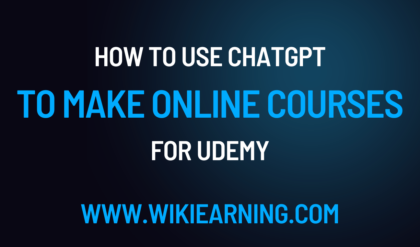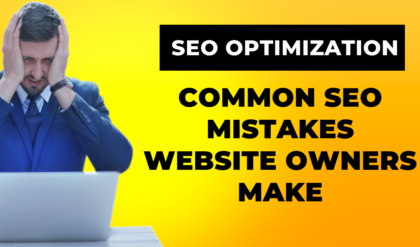
How To Make a Website: In today’s digital age, having a website is crucial for any business or individual looking to establish an online presence. One of the most popular and user-friendly platforms for building a website is WordPress. In this article, we’ll provide a step-by-step guide on how to make a website on WordPress, from the initial setup to launching your site.
Step 1: Choose a domain name and web hosting
Before you can start building your website, you need to choose a domain name and web hosting. Your domain name is the address that people will use to access your website, and your web hosting is where your website will be stored on the internet.
There are several web hosting providers that you can choose from, such as Bluehost, HostGator, and SiteGround. These providers offer a variety of hosting plans that suit different website needs, from personal blogs to e-commerce sites.
When choosing a domain name, make sure it is easy to remember and relevant to your website’s content. You can purchase a domain name from your web hosting provider or from a domain registrar like Namecheap or GoDaddy.
Step 2: Install WordPress
Once you have chosen your domain name and web hosting, the next step is to install WordPress. Most web hosting providers offer a one-click installation option for WordPress, which makes the process easy and quick.
To install WordPress on your hosting account, log in to your hosting account’s control panel (cPanel) and find the “WordPress” option under the “Softaculous Apps Installer” section. Click on the “Install Now” button and follow the prompts to complete the installation.
Once WordPress is installed, you can access your website’s admin dashboard by adding “/wp-admin” to the end of your domain name (e.g., www.yourdomainname.com/wp-admin).
Step 3: Choose a WordPress theme
Now that you have installed WordPress, it’s time to choose a theme for your website. WordPress offers thousands of free and premium themes that you can choose from, each with its own design and features.
To access the WordPress theme repository, go to Appearance > Themes in your website’s admin dashboard. From there, you can browse through the available themes, filter them by category or search for a specific theme.
When choosing a theme, make sure it suits your website’s content and purpose. You can preview a theme by clicking on the “Live Preview” button, which will show you how your website will look with that theme.
Step 4: Install essential plugins
WordPress plugins are add-ons that extend the functionality of your website. There are thousands of plugins available in the WordPress repository that can help you with everything from SEO to e-commerce.
Some essential plugins that every website should have include:
- Yoast SEO: Helps optimize your website for search engines
- WPForms: Allows you to create contact forms and surveys
- Jetpack: Provides security and performance features
- WooCommerce: Adds e-commerce functionality to your website
To install a plugin, go to Plugins > Add New in your website’s admin dashboard. From there, you can search for a plugin, install and activate it.
Step 5: Customize your website
Now that you have installed a theme and essential plugins, it’s time to customize your website to your liking. You can customize your website’s appearance, layout, and functionality using the WordPress Customizer and individual plugin settings.
To access the WordPress Customizer, go to Appearance > Customize in your website’s admin dashboard. From there, you can change your website’s header, footer, colors, and typography.
To customize individual plugin settings, go to the plugin’s settings page in your website’s admin dashboard. From there, you can configure the plugin to suit your needs.
Step 6: Create pages and posts
Now that you have customized your website’s appearance and functionality, it’s time to create pages and posts. Pages are static content on your website, such as your homepage, about page, and contact page. Posts are dynamic content, such as blog posts or news articles.
To create a new page, go to Pages > Add New in your website’s admin dashboard. From there, you can add content to your page using the WordPress block editor. You can add text, images, videos, and other media to your page using blocks.
To create a new post, go to Posts > Add New in your website’s admin dashboard. From there, you can add content to your post using the WordPress block editor. You can also assign categories and tags to your post to help organize your content.
Step 7: Optimize your website for search engines
Search engine optimization (SEO) is the process of optimizing your website to rank higher in search engine results pages. There are several SEO best practices that you can follow to improve your website’s visibility and ranking.
Some SEO best practices include:
- Choosing relevant keywords for your content
- Optimizing your website’s titles and meta descriptions
- Adding alt text to your images
- Building high-quality backlinks to your website
To optimize your website for search engines, you can use the Yoast SEO plugin. This plugin provides a checklist of SEO best practices and helps you optimize your content for search engines.
Step 8: Launch your website
Once you have created your pages and posts, optimized your website for search engines, and tested your website for functionality, it’s time to launch your website.
To launch your website, you need to change your website’s visibility settings from “Coming Soon” to “Public”. To do this, go to Settings > Reading in your website’s admin dashboard and uncheck the “Discourage search engines from indexing this site” option.
Congratulations! You have now created a website on WordPress. However, your website journey doesn’t end here. You need to maintain your website, update your content regularly, and monitor your website’s analytics to improve your website’s performance.
Conclusion
WordPress is an easy-to-use platform for creating a website, even if you have no coding experience or help from a web development company. By following the steps outlined in this article, you can create a website that is not only visually appealing but also functional and optimized for search engines. Remember to choose a relevant domain name and web hosting, install essential plugins, customize your website, create pages and posts, optimize your website for search engines, and launch your website. With dedication and effort, your website can become a valuable asset to your business or personal brand.





